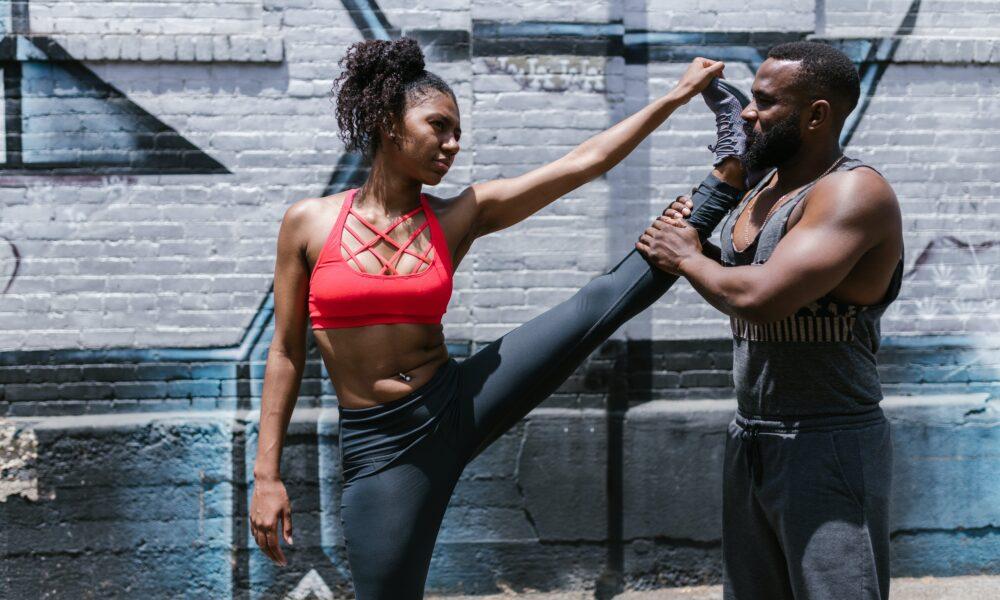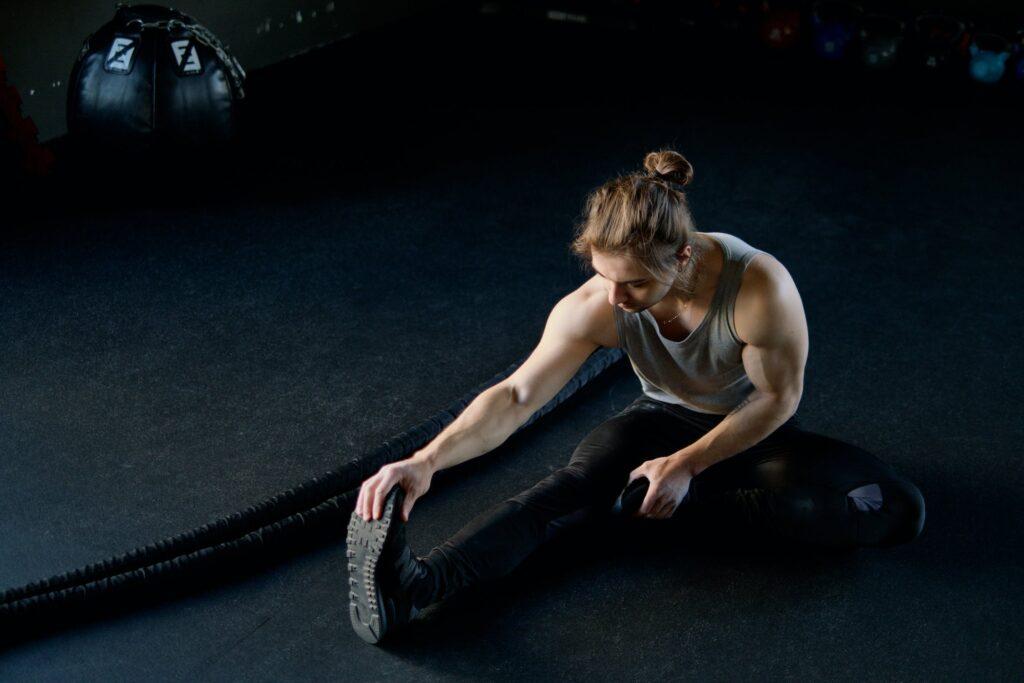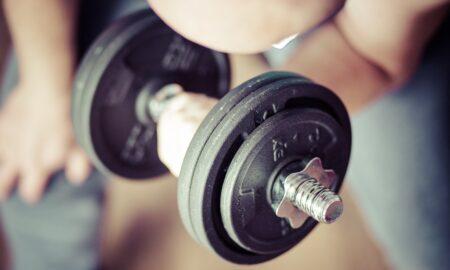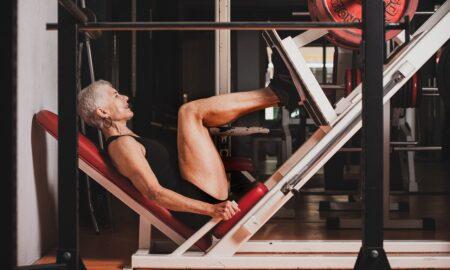

As athletes push their bodies to achieve peak performance, the risk of injuries becomes an inherent part of their journey. These injuries often restrict their training intensity and workout type, hindering muscle development and strength.
Prolonged injuries can lead to extended periods of inactivity, resulting in muscle atrophy affecting the physique that bodybuilders work hard to maintain.
Fortunately, stretching and mobility exercises are effective strategies to reduce the risk of injuries. Stretching improves flexibility and joint range of motion, while mobility exercises improve strength and stability to prevent muscle injury.
To learn more about preventing injury, this article explains some stretching and mobility exercises you can include in your overall training routine.
Does Stretching Prevent Injury?
Stretching helps in injury prevention, but its effectiveness depends on the type of stretching and the specific activity.
Stretching is categorized into two main types: static stretching and dynamic stretching.
Static stretching allows you to hold a stretch at the end range for a prolonged period, typically 15-60 seconds. It indirectly contributes to injury prevention by keeping the muscles flexible. For instance, when your hamstring muscles shorten and tighten due to prolonged sitting for a whole day, they may get injured when you suddenly try a strenuous workout that stretches them beyond their limits.
Static stretching keeps the muscles flexible to maintain the range of motion, preventing joint injury and muscle damage. Static stretching contributes to overall flexibility and may help with injury prevention. It’s recommended to perform static stretching after a workout or as a separate session to improve flexibility.
Dynamic stretching, also known as dynamic warmup, involves moving parts of your body through a full range of motion. It might include doing exercises you’re about to engage in but at a low intensity and low heart rate level or exercises such as swimming, jogging, or cycling.
You can perform dynamic stretches as post-workout for muscle recovery or as warm-up exercises before working out. It warms up cold muscles and loosens tight muscles by increasing blood flow to the muscles before a workout. Warming up and lengthening muscles helps in injury prevention. This stretch also improves flexibility while enhancing muscle strength.
When stretching, focus on the muscles critical for mobility, like the caves, quadriceps, hamstrings, pelvis, shoulders, hip flexors, and lower back. Stretch them daily or at least three times a week to attain flexibility and prevent injury.
Remember not to jump into stretching directly; take 10 minutes to warm up your muscles by doing quick and low-intensity exercises. Stretching when muscles are cold can cause muscle damage because muscle fibers are unprepared.
Why Stretching is Important
Stretching offers a range of benefits for both physical health and overall well-being. Here are some key reasons why stretching is important for bodybuilders.
Improved Flexibility
Consistent stretching helps improve flexibility, which enhances the range of motion in your joints and muscles. A wide range of motion reduces the risk of muscle strains or joint injuries during physical activities.
Improved Circulation
Dynamic stretching increases muscle blood flow, delivering oxygen and nutrients and removing waste products. Improved blood circulation warms up the muscles and prepares the muscles for workouts, leading to injury prevention. Improved circulation also supports overall health and muscle recovery process.
Enhanced Athletic Performance
Dynamic stretching improves joint function by enhancing the range of motion and flexibility in the muscles and connective tissues surrounding the joints. It also increases blood flow and alleviates muscle tension and stiffness, particularly after periods of inactivity or prolonged sitting. This can enhance your performance and ease of movement.
Promotes Better Posture and Balance
Without flexibility in muscles, they become short and tight. Stretching contributes to better posture and helps prevent muscle imbalances by providing flexibility across muscle groups and releasing muscle tension that may contribute to poor alignment.
Imbalances can lead to poor posture, altered movement patterns, and an increased risk of injury.
Alleviates Muscle Soreness
Dynamic stretching can alleviate muscle soreness, especially after intense exercise. It promotes recovery by reducing muscle tension and improving blood flow to the affected areas.
Reduces Injury Risk
Stretching increases the range of motion, lengthening the shortened and tightened muscles over time. Maintaining muscle length prevents muscles from stretching beyond their limitation when performing a strenuous workout, which may prevent injury.
Increased flexibility can reduce the risk of injury by ensuring that muscles and joints are better prepared for physical activities. Flexible muscles are less prone to strains, sprains, and other injuries.

7 Stretches or Mobility Exercises to Help with Injury Prevention
Here are some essential stretching and mobility exercises that athletes can include in their routines:
1. Leg Swings
Leg swings are dynamic stretches stretching the quadriceps, hamstrings, and groin muscles. They also warm up your legs to prepare them for the next workout.
How to Perform Leg Swings
- Stand on one leg.
- Swing one leg forward and backward in a controlled manner.
- Perform 10-15 swings, then switch to the other leg.
- Next, swing the leg sideways across the body for 10-15 repetitions
2. Arm Circles.
An arm circle is a dynamic stretch that tones the shoulders, biceps, triceps, and upper back muscles. If done with other arm exercises, it can help you reduce fat in your arms.
How to Do Arm Circle
- You can do an arm circle while standing or sitting. If you want to perform it while standing, start by placing your legs shoulder-width apart.
- Extend your arms straight to the sides at 90 degrees and parallel to the floor.
- Make small circular motions with your arms in a forward direction for 10-15 seconds.
- Reverse the motion for an additional 10-15 seconds.
3. Half Kneeling Hip Flexor Stretch
Half kneeling hip flexor is a warm-up and cool-down workout that works on hip flexor muscles. The exercise eliminates low back pain and lengthens and loosens tight muscles to help maintain posture.
How to Do Half Kneeling Hip Flexor Strech
- Kneel with one knee on the ground and the other foot in front, forming a 90-degree angle at your knee and hip. Your right hip should align with your right knee and your left knee directly above your left ankle.
- Maintain an upright posture with your torso and shift your weight forward until you feel a stretch in the top of your thigh (rear leg) and hip.
- Hold for 15-30 seconds, then switch legs.
4. Cable Pullover
A cable pullover is a mobility exercise to help build your six-pack muscles. It works on rectus abdominus and lats muscles while keeping your lower back in check.
How to Do Cable Pullover
- Adjust the cable machine by raising the bar attachment slightly above your head and then attaching the bar to the high pulley.
- Stand facing the cable machine
- Grab the handles with a wide overhand grip (hands slightly wider than shoulder-width apart) and move two steps away from the machine. Keep a slight bend in your elbows and maintain a straight or slightly arched back.
- With your core engaged, place your feet shoulder-width apart and slightly bend forward.
- Straighten your arms and pull the bar down using your lats in a smooth, controlled motion toward your chest. The handle should reach your thighs.
- Hold to the count of 5 and return the bar to the starting position in a controlled manner. Perform the desired number of repetitions, usually 8-12 reps.
5. Single-Leg Deadlift
The single-leg deadlift is a compound mobility exercise that targets the muscles in the posterior chain, including the hamstrings, glutes, and lower back. It’s an excellent exercise for improving balance, stability, and functional strength.
The exercise forces each leg to work independently, helping to identify and correct muscle imbalances or discrepancies in strength between the left and right sides that can cause injury.
You can perform the single-leg deadlift with or without weights. If you’re a beginner, you may start with bodyweight only and progress to holding dumbbells or kettlebells as you become more comfortable with the movements.
How to Do Single-Leg Deadlifts
- Stand with your feet hip-width apart and shift your weight onto one leg.
- Hinge at the hips and simultaneously extend the non-weight-bearing leg straight behind you. The leg should align with your torso to create a straight line from your head to your extended foot.
- Lower your torso towards the ground with your hand opposite the standing leg until you feel a stretch in your hamstrings, without rounding your back. Ensure your core is engaged to stabilize your spine.
- Slowly drive through the heel of your standing foot and engage your glutes to return to the starting position. Perform the same movement on the opposite leg.
6. Walking Lunge
The walking lunge exercise primarily targets lower body muscles, including the quadriceps, hamstrings, glutes, and calves. When loaded with weight, it challenges the body’s strength and ability.
It also engages the core for stability and balance, reducing the risk of injury when working out.
How to Do Walking Lunge
- Stand with your feet hip-width apart and hold a dumbbell in each hand by your sides.
- Step forward with your right foot, ensuring your knee is above your ankle.
- Lower your body by bending both knees until your back knee is just above the ground. Keep your torso upright and your core engaged.
- Push off the front foot and bring your back foot forward to step into the next lunge.
- Continue walking forward, alternating legs with each step, creating a fluid and continuous walking lunge motion.
7. Lateral Raise
The lateral raise is an isolation exercise that targets the deltoid muscles in the shoulders. It’s popular for developing shoulder strength and improving the appearance of shoulder definition.
How to Perform Lateral Raises
- Stand with your feet shoulder-width apart and hold a dumbbell in each hand. Let your arms hang down at your sides, keep a neutral wrist position, and ensure a secure grip on the dumbbells.
- Exhale and lift weights straight to the sides until they reach shoulder level. Your arms should be parallel to the ground at the movement’s top.
- Hold the position at the top briefly, feeling the contraction in your shoulder muscles.
- Lower the dumbbells back to the starting position, controlling the descent.
Conclusion
Prioritizing injury prevention is paramount for athletes seeking to optimize their performance and maintain long-term physical health.
Stretching and mobility exercises such as walking lunge, lateral raise, cable pullover, and arm circles can reduce the risk of injuries associated with tight muscles and restricted mobility. They enhance flexibility, joint range of motion, and overall functional movement patterns.
Furthermore, the commitment to a well-rounded stretching and mobility routine contributes to improved athletic performance, agility, balance, and coordination.
Incorporate these stretching and mobility exercises into your comprehensive fitness program to reinforce your commitment to longevity, resilience, and sustained peak performance throughout your athletic journey.























You must be logged in to post a comment Login